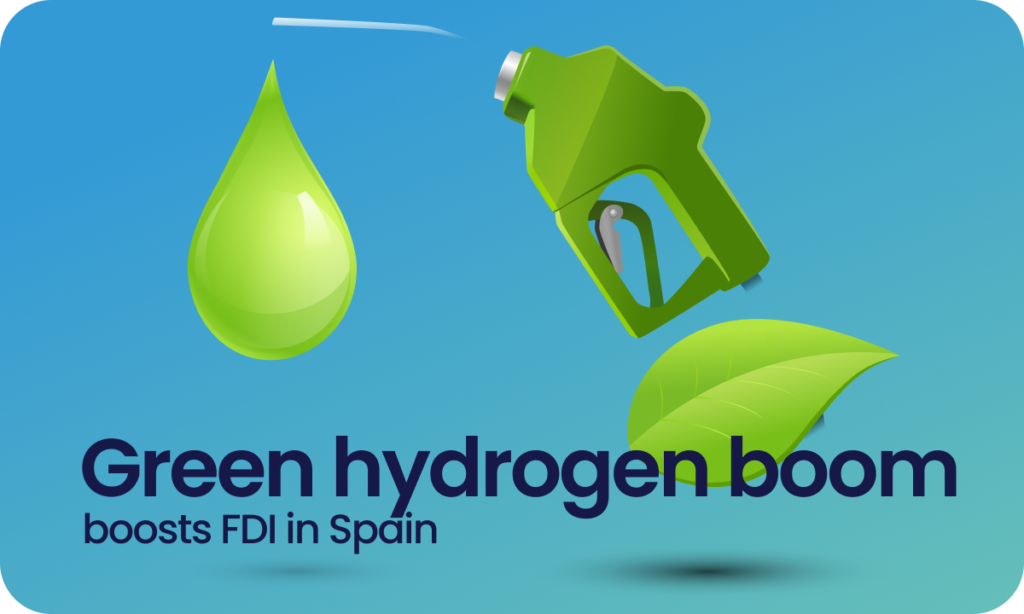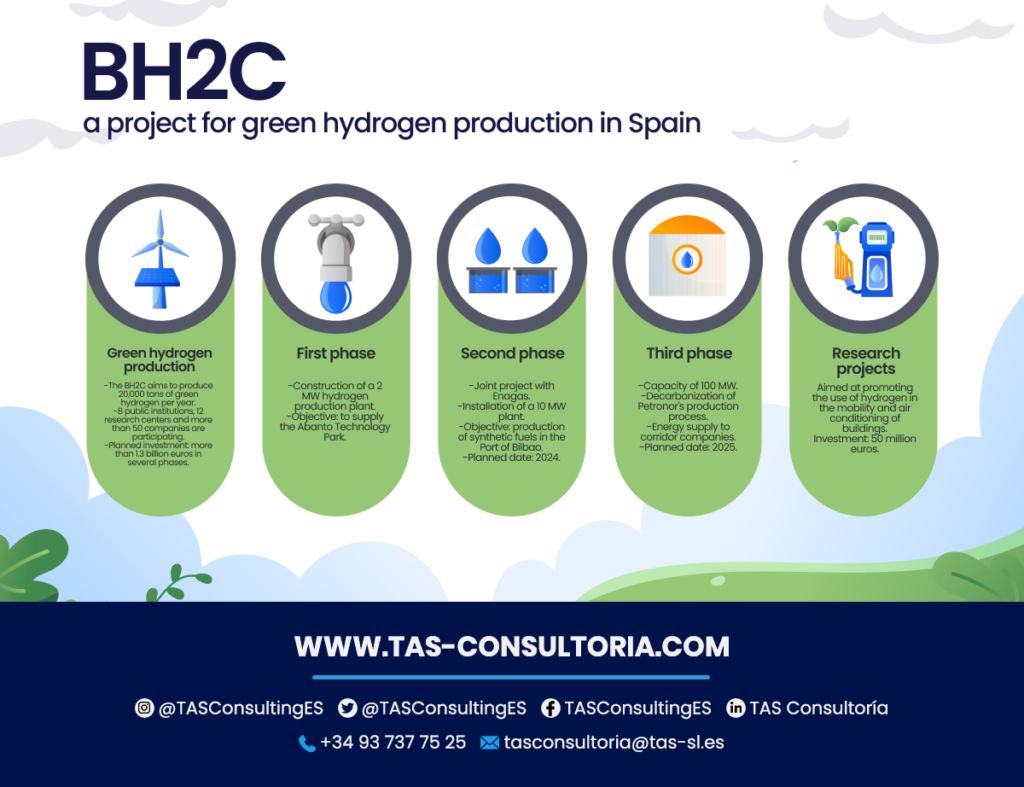
Green hydrogen is becoming one of the most promising energy sources in the transition to a sustainable future in Spain. In addition, foreign direct investment is also coming to our country to take advantage of the potential of this resource. In this article, we tell you all about the Spanish green hydrogen boom and how it is attracting foreign direct investment to drive a more sustainable future. Read on to find out more!
What is green hydrogen and what is it for?
Green hydrogen is a type of element that is produced by the electrolysis of water using renewable energies such as solar or wind power. This process separates water molecules into hydrogen and oxygen through the use of electricity.
Unlike gray hydrogen, which is produced from fossil fuels and emits greenhouse gases in the production process, green hydrogen is a clean, renewable energy source.
In addition, green hydrogen has the potential to play an important role in the transition to a low-carbon economy, as it can be used as a form of renewable energy storage that can be used when needed.
You may also be interested in: Impact of health tech today
How is green hydrogen produced in Spain?
The BH2C, a project led by the Government of the Basque Country and the Petronor-Repsol company, aims to produce 20,000 tons of green hydrogen per year. With the participation of 8 public institutions, 12 research centers and more than 50 companies, the planned investment exceeds 1,300 million euros in various phases.
The Basque Hydrogen Corridor (BH2C) project has an ambitious roadmap for the production of green hydrogen. The first phase of the project involves the construction of a 2 MW hydrogen production plant to supply the Abanto Technology Park.
The second phase, together with Enagás, foresees the installation of a 10 MW plant to produce synthetic fuels in the Port of Bilbao in 2024.
The third phase, scheduled for 2025, is the largest, with a capacity of 100 MW to decarbonize Petronor’s production process and supply energy to companies in the corridor with green hydrogen.
In addition, 50 million euros will be allocated to research projects on hydrogen for mobility and air conditioning of buildings. You can see the summary of the project in the image below:

What is foreign direct investment (FDI)?
However, with the range of green hydrogen production projects, international financial investment has increased in Spain. This is known as foreign direct investment (FDI): the movement of capital from a company in one country to a company in another country to establish lasting ownership control.
This is considered a long-term investment strategy, in which the company becomes a direct investor in a foreign company. FDI can be done in several ways, including the acquisition of an existing foreign company or by building a new one from scratch.
Foreign direct investment has many benefits, such as access to new markets and technology transfer. As a result, it is possible to increase efficiency and productivity.
It can also be beneficial to the host country, as it can generate employment and attract new development opportunities.
You may also be interested in: International telework regulation
How does this green hydrogen proposal attract FDI?
On the one hand, the importance of decarbonizing hydrogen for industrial use has increased in Europe in recent years. This has been driven by Russia’s encroachment on Ukraine, which is the world’s second largest producer of natural gas, which is critical to global hydrogen production.
On the other hand, in just 16 years, foreign direct investment in renewable energy has undergone a significant change. In 2005, fossil fuels dominated FDI, while renewables were barely a fraction.
Today, the situation is reversed: fossil fuels are attracting less and less FDI and renewable energies, such as green hydrogen, account for about 15% of total investment.
This change has led to the fact that the leading countries in research and installation of clean energies have become a focus of attraction for FDI in different sectors of the economy. This is reflected in the image below:

Spain and Europe have a significant lead in the green hydrogen race
The Spanish Secretary of State for Energy, Sara Aagesen, pointed out that 20% of the world’s renewable hydrogen projects are in Spain, with only the United States ahead in the table.
In addition, Spain ranks alongside Germany as one of the European countries that have invested the most in renewables in recent years, and seventh in the world. All this places our country in a privileged position to become an international hub for green hydrogen.
As part of a strategy to reduce greenhouse gas emissions, Spain, France, Germany and Portugal have agreed to build a green hydrogen pipeline by 2030 and transport two million metric tons of hydrogen per year to France. The project is called BarMar.
Spanish companies are asking for subsidies similar to those announced by the United States to boost the development of the hydrogen market and reduce the costs of zero-emission products.
Spain is on its way to becoming a world leader in the production and use of green hydrogen, with increasing foreign direct investment betting on a more sustainable future.
You may also be interested in: The road to digitization of the public sector in Spain
With a clear roadmap and ambitious projects underway, the country is in a privileged position to take full advantage of the business and employment opportunities offered by this innovative technology.
If you want to stay up to date on the markets and investments of the future, subscribe to our library and discover everything you need to know about green hydrogen and its market potential.




Your email address will not be published .
Required fields are marked with *